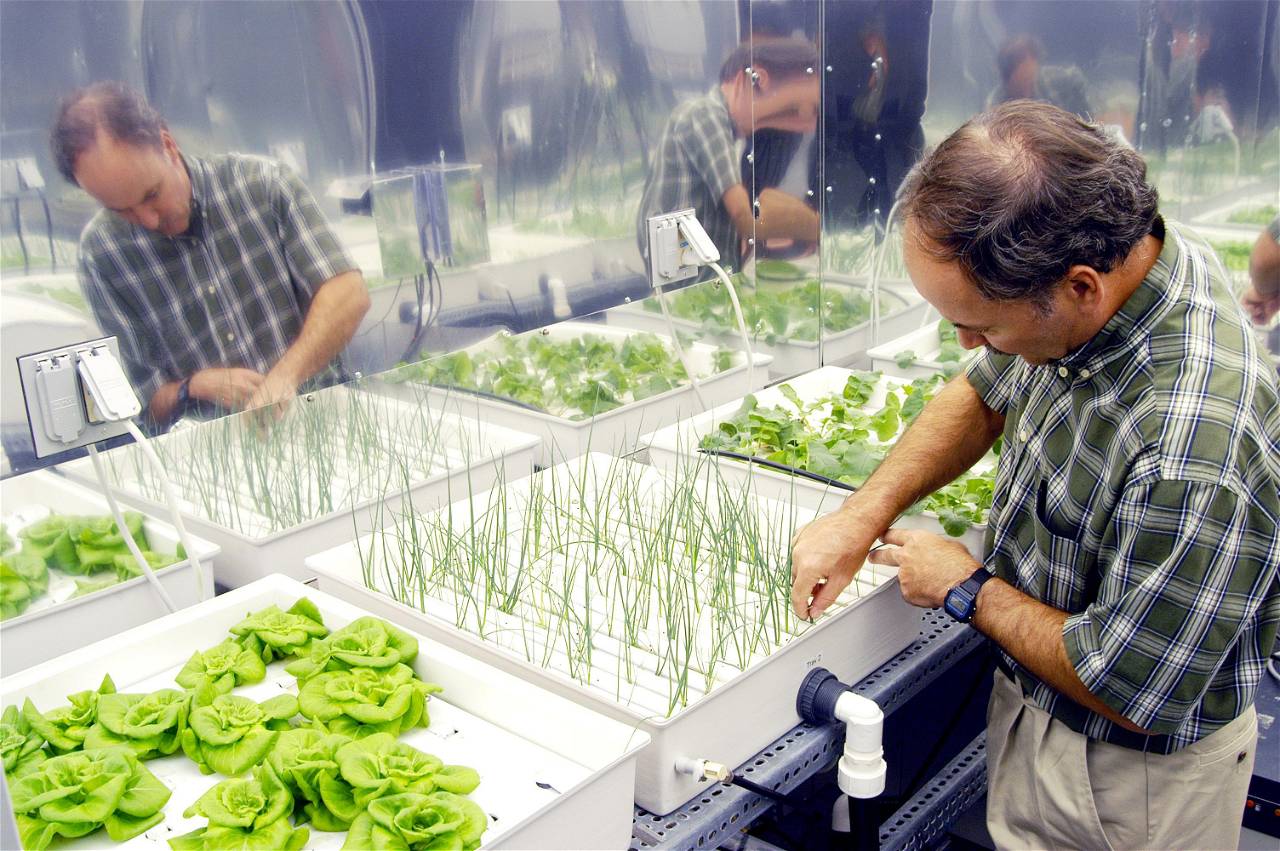
The process of growing plants without soil is called Hydroponics and it is a branch of hydroculture. In this method, water solvents are used instead of soil which consists of minerals nutrient solution. Plants of the third category i.e. terrestrial plants can be grown with their roots and they should be exposed to the nutritious liquid.
Plants are also grown through a process called photosynthesis, in which they use sunlight and a chemical inside their leaves called chlorophyll to convert carbon dioxide and water into glucose and oxygen, as shown in the reaction.
6CO2 + 6H2O → C6H12O6(Glucose)+ 6O2
The other thing that comes to mind that how crops are grown without soil and what all is included in that solvent. So, the nutrients we use may come from different sources, such as fish excrement, duck manure, or chemical fertilizers that we use in this system.
Can vegetables be grown without the soil method?
With this method, vegetables can be produced without any disease. This technique can be beneficial in areas with inaccessible geographical conditions and a lack of irrigation, but for this, farmers will have to spend a good amount of money.
It would cost about two lakh rupees to arrange this technique for a common playhouse. But later they will be able to earn big profits by growing spinach, cabbage, capsicum, tomatoes, and other leafy vegetables without soil.
Plants will also not be at risk of soil-borne diseases. Once the plants are watered, there will be no irrigation system for 10 to 15 days.

Advantages of Hydroponics
1. Plantation without soil
We can grow plants in places where the land is limited or is contaminated. In the early days, this system was successfully used to supply fresh vegetables for troops in Wake Island. The scientist of NASA has considered this system as the future farming to grow foods for astronauts in space.
2. Better use of space and location
Through this method, you can grow plants in a small apartment, bedroom, or kitchen as long as you have some space. This means you can grow your plants closer, and consequently with huge space savings.
3. Water saving
This method is water saving in which plants will take up only required amount of water. So, there is less water loss in hydroponics.
4. Better growth rate
Do hydroponic plants grow faster than in soil?
First of all, let me explain that a plant can only develop quicker if the conditions are right. So, it is true that a plant can develop quicker using the hydroponic method since we can control growth factors such as temperature, lighting, moisture, and, most importantly, nutrients.
Nutrients are another crucial thing that a plant needs, and with this procedure, nutrients are delivered in sufficient quantities and come into direct contact with the root systems. As a result, the energy that would otherwise be wasted in the quest for vital nutrients in the soil is preserved and utilized for growth.
Disadvantages and Challenges
1. System failure threats
If you are using electricity to manage the whole system, you have to take care of the power blackout because this system will stop working if there is no supply of electricity and plants will dry out quickly or even die in several hours. Hence, keep a backup power source.
2. It requires your time and commitment
Plants grown in soil can be left on their own for days and weeks, and they can survive in a short time. Nature and soils will help in regulating things if something is not balanced. But it’s not the same in hydroponics. Plants will die more quickly if you will not take proper care of them because plants are depended on you for their survival.
3. Knowledge and Experiences
It is not easy to set up this system because it runs on a variety of equipment that will necessitate skill in order to use the gadget. It is critical to understand this system, such as what plants may be grown and how they will survive and thrive in a soilless environment. If you make even a minor mistake while setting up the system, it will have an impact on the growth of your plant.
4. Water and electricity risks
In this system, mostly water and electricity are used. so, Beware of electricity in a combination of water in close vicinity. Ensure safety precautions first when working with water and electric equipment.
So, these were the advantages and disadvantages of the hydroponics system.
Also read, why hydroponic farms are trending in India.
















